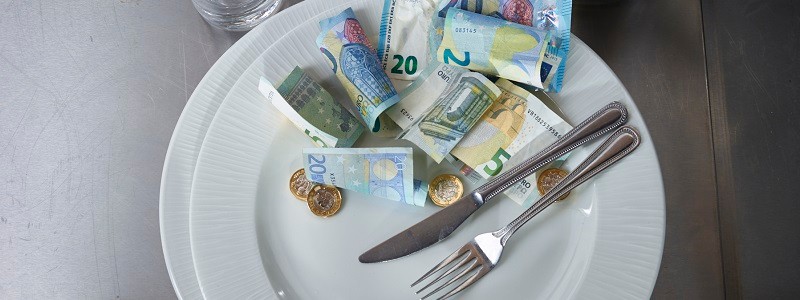Wise up on waste
WRAP estimates 1 in 6 meals OOH are thrown away! Food waste does not make economic, social or environmental sense.
Our Waste Tool
- Enables tracking of food waste
- Enables site/outlet food waste data to be visible
- Measures by day part: Breakfast, Lunch, Dinner
- Measures by waste stream: Preparation, Plate and Spoilage and an extra category for a waste stream of your choice e.g. servery, room service etc.
- Calculates cost per cover and waste weight (kg) per cover
- Data entered can be downloaded into xls, cvs and pdf
- Has an instant reporting process
- Is web-based; mobile and tablet enabled
- Full training guide and customer training supported
Take action to reduce your waste. Call our Customer Engagement Team on 1800 789 289 (Option 1) to find out how to make the online tool available in your business.

Here are our top tips to help you wise up on waste:
- Portion Sizes - Regularly check plates when they come back to understand which dishes are too heavy or too large. You may notice a lots of garnish left over or too much sauce. Making adjustments can help save money.
- Accurate Measuring - Use scales to measure out ingredients as well as portions. Your recipe should always be the basis for your selling price. It’s not unusual for an over-service of more than 40% to occur.
- Specials Board - A daily specials board can help to manage the extra throughput of ingredients. Perfect for great value seasonal items.
- Accurate Ordering - Employ accurate ordering and stock rotation to avoid ingredients going out of date. If there is a booking cancellation use ingredients on specials board.
- Get Creative - Be creative with vegetable trimmings to make tasty soups. Use toast from breakfast for breadcrumbs for fishcakes, and stale brioche for bread based puddings.
- Use of off cuts to create tasty starters. eg, pork and chicken trimmings can be turned into pâtés and terrines. Also Salmon trim makes great canapes. Turn excess produce into chutneys, pickles and jams.
- Dehydrate excess fruit and vegetables to create highly flavoured powders. Dry out the fruit or vegetable in a low oven and whizz through a processor. Use the vegetable powder in sauces or and fruit powders over sorbets and ice-creams.
- It's better to freeze great ingredients for a short time than use second rate ingredients fresh and risk producing waste.